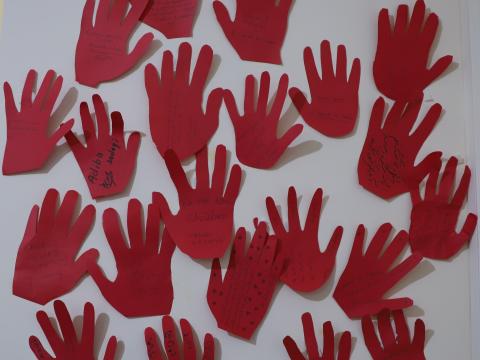Recruitment and use of children in armed conflict continues to increase, as funding for Child Protection shrinks in Afghanistan

The UN estimates the number of child soldiers in the world remains at tens of thousands, though progress has been made to end this practice and release children from armed forces and groups. In 2019, the UN verified 7,747 children, some as young as 6. Among those, 90 per cent were used by non-state actors. Although the use of child soldiers is illegal in Afghanistan, which ratified the UN the Optional Protocol to the CRC on the Involvement of Children in Armed Conflict (OPAC) in 2003, children have been recruited and used by both the armed forces and armed groups for years. This is triggered by a complex set of reasons, including duty to the family, patriotism, honor and economic difficulties, as boys are often the sole breadwinner for the family.
For the fifth year in a row, Afghanistan was listed as the deadliest conflict for children in the 2020 Report of the Secretary-General on Children in Armed Conflict. The 2020 Afghanistan Humanitarian Needs Overview highlighted that additional protection assistance is needed for children who are at heightened risk of recruitment into armed groups. Children continued to be forced into active conflict and child casualties represented a third (31 per cent) of all civilian casualties in the first nine months of 2020. Recruitment and use of children in armed conflict continues to increase, with UNAMA verifying 155 children being recruited and used by armed groups between 1 January and 30 September 2020. This demonstrates a disturbing trend - more than three times the number of children recruited and used during the same period in 2019 and still likely a gross under-estimate of recruitment overall.
Despite the scale of the challenge, the violence children experience, and the harm it brings to their development, funding for programmes to protect children and support reintegration for former child soldiers remains vastly lower than what needs require. In humanitarian settings, child protection remains the 2nd least funded sector of response. Child reintegration represents an even narrower portion of resources allocated to child protection. In Afghanistan, the current appeal for child protection activities sits at just 58% funded. Gaps in funding represents a significant constraint for preventing child recruitment and the provision of comprehensive child reintegration services and supports.
COVID-19 has impacted child recruitment and use according to the UN’s Special Representative to the Secretary-General (SRSG) on Children & Armed Conflict. The socio-economic impacts have placed families in precarious financial positions, which in turn has pushed boys to join armed groups to access food, income or protection. These same impacts have also created an increased risk for girls of forced marriage to armed actors, becoming recruited and used by armed forces and groups in this way.
World Vision Afghanistan focuses on supporting community based structures that enhance the protective environment for children, which is often crucial to preventing or mitigating the risk of recruitment for girls and boys. This includes capacity building initiatives with The Child Protection Action Network (CPAN) a coalition of government, NGO, community and religious leaders who was responsible for preventing 23 cases of child recruitment in the first half 2020. World Vision Afghanistan is “Raising Our Red” for a future where prevention of child recruitment and support to former child soldiers is adequately and sustainably resourced, and children have a life free from violence, exploitation and abuse.